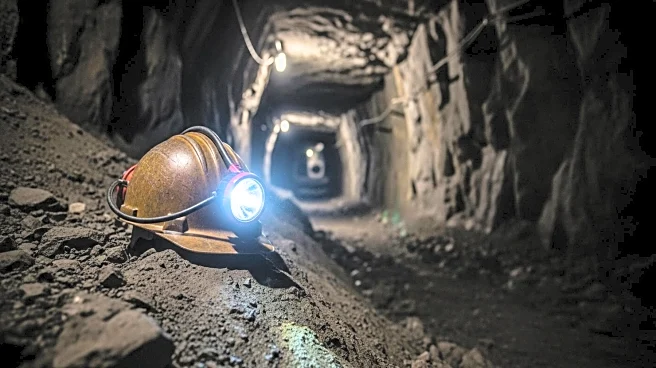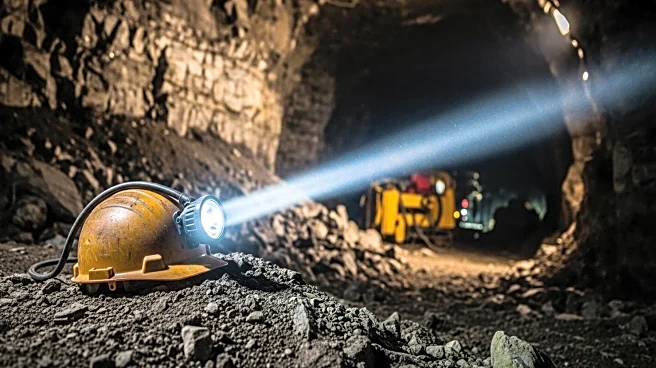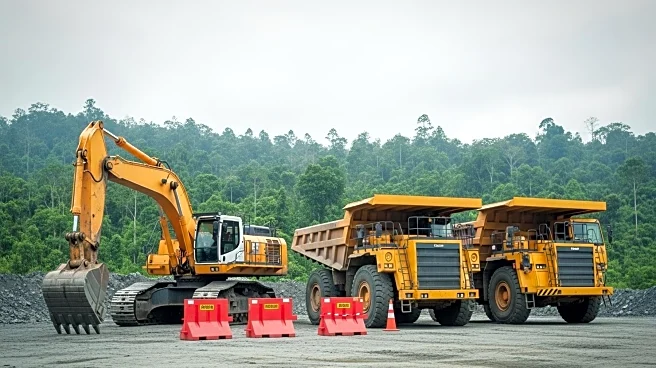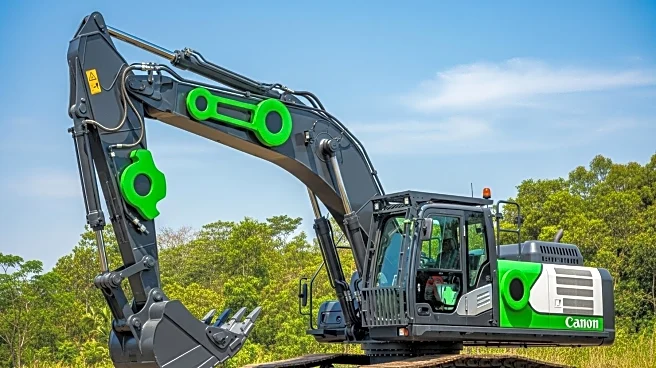What's Happening?
The Grasberg Block Cave mine in Papua, Indonesia, one of the world's largest copper mines, has experienced a significant disruption due to a flood of wet material, leading to the suspension of all underground operations. This incident resulted in two fatalities and has prompted Freeport-McMoRan Inc. to declare 'force majeure,' indicating an inability to meet contractual obligations due to circumstances beyond control. The mine, which contributes over 3% of the global copper supply, is expected to see a 35% reduction in output next year, with full recovery not anticipated until 2027. This disruption adds to a series of setbacks in the copper sector in 2025, including issues at other major mines like Codelco's El Teniente in Chile and Ivanhoe's Kakula in the Congo.
Why It's Important?
The disruption at Grasberg is significant as it exacerbates an already strained global copper market. Copper is crucial for electronics, renewable energy infrastructure, and data centers, and the demand is rapidly increasing. The loss of production from Grasberg, along with other disruptions, is expected to result in a substantial supply deficit. Analysts have revised their forecasts, with Goldman Sachs projecting a total copper mine supply loss of 525,000 metric tons due to the disruption. This has led to a surge in copper prices, reaching a 15-month high. The situation underscores the fragility of mining infrastructure and highlights the need for investment in safety and resilient logistics.
What's Next?
The global copper market is likely to face continued volatility as stakeholders assess the long-term impacts of the Grasberg disruption. Analysts predict a significant supply deficit in 2026, with potential further shortages in 2027 unless copper prices rise to incentivize new supply. The industry may see increased pressure to invest in infrastructure improvements and safety measures to prevent future disruptions. Additionally, the market will be closely monitoring the phased restarts at Grasberg and other affected mines to gauge recovery timelines and adjust supply forecasts accordingly.
Beyond the Headlines
The Grasberg incident highlights broader issues within the mining industry, such as the need for improved safety standards and the challenges posed by geological and operational complexities. The reliance on a few large mines for a significant portion of global supply makes the market vulnerable to disruptions. This situation may prompt a reevaluation of supply chain strategies and encourage diversification of sources to mitigate risks. Furthermore, the incident could accelerate discussions on sustainable mining practices and the integration of automation and technology to enhance operational resilience.










